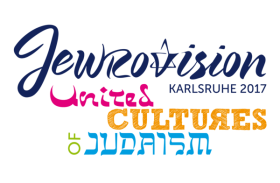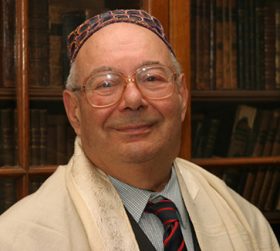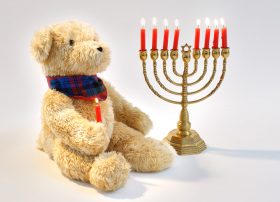 “Jewrovision”, the largest singing and dancing competition for Jewish youth in Europe, will take place this year for the 16th time. Last year an audience of over 2,000 gathered at the Rose Garden Hall in Mannheim, accompanying the brilliant stage show produced by youth centers with frenetic applause. It’s hard to imagine that Jewrovision 2002 was just one of a number of evening programs at a Jewish recreational camp called Machané. Back then, at a recreational center in Bad Sobernheim (not far from Frankfurt), six groups from various cities appeared on a stage just three yards wide. Today, only 15 years later, there are 18 teams presenting their multi-media performances on enormous stages in much larger venues. An extraordinary development. → continue reading
“Jewrovision”, the largest singing and dancing competition for Jewish youth in Europe, will take place this year for the 16th time. Last year an audience of over 2,000 gathered at the Rose Garden Hall in Mannheim, accompanying the brilliant stage show produced by youth centers with frenetic applause. It’s hard to imagine that Jewrovision 2002 was just one of a number of evening programs at a Jewish recreational camp called Machané. Back then, at a recreational center in Bad Sobernheim (not far from Frankfurt), six groups from various cities appeared on a stage just three yards wide. Today, only 15 years later, there are 18 teams presenting their multi-media performances on enormous stages in much larger venues. An extraordinary development. → continue reading
“This four-minute performance means three to four months of training”
Hanukkah
“8 Facts” about the Jewish Feast of Dedication
1
The history of the Jewish Festival of Lights is about the one temple in Jerusalem. To be precise, about its re-consecration (“Hanukkah”) in the year 164 B.C.E. after it had stood for many years under Syrian-Greek control.
2
During this period of foreign rule, two groups were in conflict: on the one side was the Seleucid Empire under Antiochus IV Epiphanes, while on the other side were the courageous Maccabees led by the priest Mattathias and his sons. → continue reading
Lionel Blue’s Backdoor to Heaven
An Obituary

Lionel Blue, rabbi, writer and broadcaster, was born on 6 February 1930 and died on 19 December 2016 in London.
Rabbi Lionel Blue was one of the last of a generation of liberal rabbis in Britain that included Rabbis John Rayner, Hugo Gryn and Albert H. Friedlander. They were all children of the Second World War who carried stories of loss and displacement with them. Each of them was singularly brilliant and charismatic in his own way, helping loosely affiliated Jews to find a way back to a liberal, inclusive form of Judaism. Unlike the others, Lionel Blue was not a refugee, but grew up as the son of a tailor and secretary in London’s then predominantly Jewish East End, experiencing the Blitz and the local violence of Oswald Mosley’s anti-Semitic blackshirts.
Born in 1930, Blue documented his struggles with his homosexuality as well as his path to the rabbinate in his book “Godly and Gay,” published in 1981. Blue was private, but non-secretive about his long-term partnerships and as the first rabbi in Britain to publicly declare his homosexuality, he became an important role model for gay Jews. → continue reading
